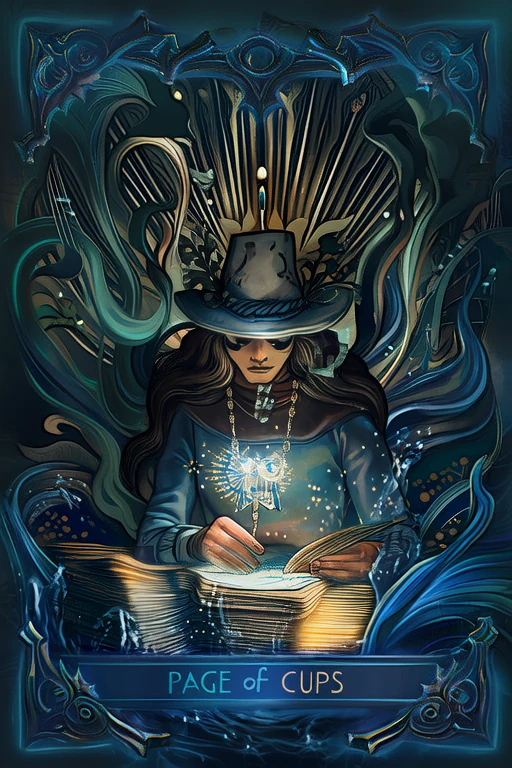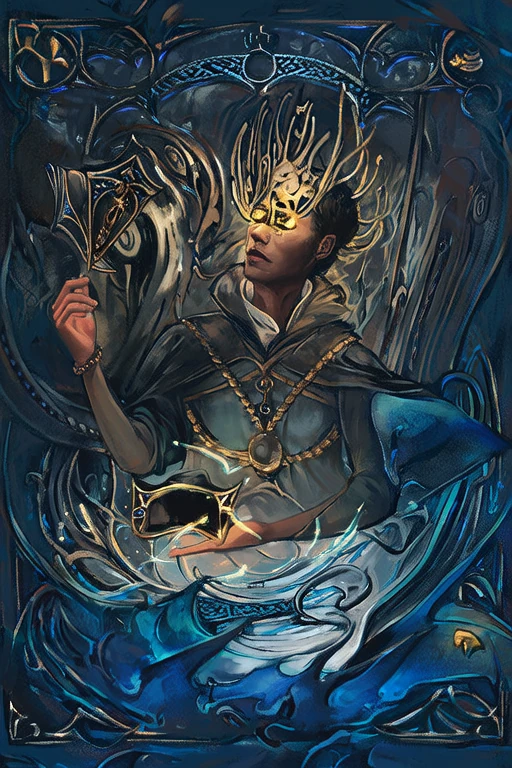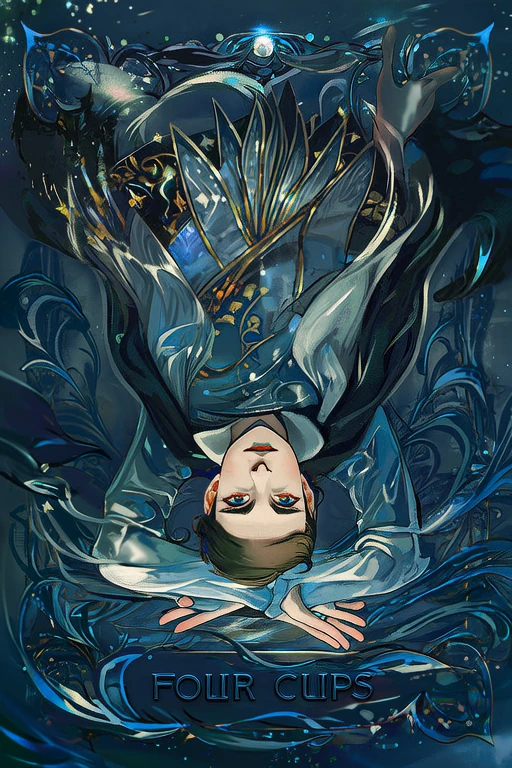
Page of Cups
Discover the deep meaning of Page of Cups with our free AI-powered tarot interpretation. Get instant, accurate readings based on advanced tarot knowledge.

Keywords
Upright Meaning
Creative opportunities, intuitive messages, curiosity
Reversed Meaning
New ideas, doubting intuition, creative blocks
Full Interpretation
The Page of Cups represents creative opportunities, intuitive messages, and artistic inspiration.
In-Depth Analysis
📜 Historical Background
The Page of Cups is one of the 56 Minor Arcana cards in the tarot deck, specifically belonging to the suit of Cups, which is associated with emotions, intuition, and relationships. Its origins trace back to early 15th-century Europe, particularly in Italy and France, where tarot was first developed as a playing card game before evolving into a tool for divination and spiritual insight. The earliest known depictions of the Page of Cups appear in the Visconti-Sforza and Marseille tarot decks, which laid the foundation for later interpretations. In these early decks, the Page is often shown as a youthful figure holding a cup or chalice, symbolizing the beginning of an emotional or spiritual journey. The imagery was heavily influenced by medieval court structures and the concept of the 'squire' or 'page' serving a higher-ranking noble, thus representing the early stages of learning and emotional maturity.
Throughout history, the Page of Cups has been associated with themes of innocence, creativity, and emotional receptivity. Some interpretations link the card to mythological figures such as the Cupbearer of the gods in Greco-Roman mythology, or the biblical story of Samuel, who as a young boy received divine messages. In the Rider-Waite-Smith (RWS) deck, which became the standard for modern tarot, the Page of Cups is depicted as a young man holding a fish-emerging cup, symbolizing the unexpected or intuitive messages that arise from the subconscious. This imagery has been interpreted in various ways across cultures, with some Eastern traditions associating the card with spiritual awakening and the flow of divine energy.
Over time, different tarot decks have offered unique interpretations of the Page of Cups. In the Thoth Tarot by Aleister Crowley, the card is known as the Knight of Cups and is associated with emotional fluidity and artistic inspiration. The Wild Unknown Tarot simplifies the image to a single black bird holding a white cup, evoking mystery and emotional depth. These variations reflect cultural and artistic shifts in how we perceive emotional intelligence and spiritual receptivity. Despite these differences, the core essence of the Page of Cups remains consistent: it represents the emergence of emotional insight, creativity, and the potential for deep emotional connection. Its historical evolution reflects a growing understanding of the inner world and the importance of intuition in navigating life’s complexities.
Symbolism & Imagery
The Page of Cups is rich in symbolic meaning, with each element in its imagery contributing to its overall interpretation. At the heart of the card is the figure of a young page, often depicted holding a cup from which a fish or water creature emerges. This symbolizes the subconscious mind, intuition, and the emergence of emotional truths. The cup itself is a powerful emblem of the element of Water, which governs emotions, relationships, and spiritual depth. The presence of the fish or water creature suggests that something new and unexpected is arising from the depths of the unconscious, often in the form of inspiration, insight, or emotional clarity.
Color symbolism plays a significant role in the interpretation of the Page of Cups. Blue, the dominant color in most depictions, represents calm, depth, and emotional sensitivity. White or silver accents often signify purity, spiritual connection, and the reflective nature of water. The youthfulness of the Page is also symbolic, indicating a beginning stage in emotional development, curiosity, and openness to new experiences. The card's number—11 in some decks, or simply a court card—can be interpreted through numerology: 11 is a master number associated with intuition, spiritual awakening, and heightened sensitivity.
Across cultures, the Page of Cups can be interpreted in various ways. In Western traditions, it often represents a young person bringing news, a message, or an emotional opportunity. In Eastern philosophies, particularly those influenced by Taoism and Buddhism, the card may be seen as a symbol of inner peace, emotional balance, and the flow of life's energies. In Jungian psychology, the Page of Cups corresponds to the archetype of the Innocent or the Seeker, representing the part of the psyche that is open, curious, and ready to explore the unknown.
When the Page of Cups appears upright in a reading, it typically signifies the arrival of emotional news, a new relationship, or a creative inspiration. It encourages the querent to trust their intuition and remain open to unexpected opportunities. Reversed, the card can indicate emotional immaturity, missed opportunities, or being overwhelmed by feelings. It may also suggest that the querent is ignoring their intuition or failing to act on a meaningful emotional insight.
The Page of Cups is closely connected to other cards in the tarot, particularly those in the suit of Cups. When paired with the Two of Cups, it may indicate the beginning of a romantic or emotional union. With the Five of Cups, it can suggest the need to move beyond disappointment and embrace new emotional possibilities. As a court card, it often represents a person—typically a young, sensitive individual who brings emotional insight or artistic inspiration into the querent's life.
Psychological Insights
From a psychological perspective, the Page of Cups resonates deeply with Carl Jung's concept of archetypes and the collective unconscious. The card embodies the archetype of the Innocent, the Seeker, or the Dreamer—figures that symbolize curiosity, openness, and the desire to explore the unknown. This archetype is associated with the early stages of personal development, where individuals are beginning to explore their emotional landscapes and connect with their inner worlds. The Page of Cups invites introspection, encouraging individuals to trust their intuition and embrace their emotional sensitivity as a source of wisdom and guidance.
In modern life, the Page of Cups serves as a reminder to stay open to new emotional experiences and creative inspirations. Whether in personal relationships, career choices, or self-expression, the card suggests that opportunities for growth and connection are emerging. It encourages individuals to listen to their inner voice and remain receptive to messages from the subconscious, whether through dreams, intuition, or synchronicities. In decision-making, the Page of Cups advises a more heart-centered approach, emphasizing the importance of emotional intelligence and empathy over purely logical reasoning.
For personal growth and self-awareness, the Page of Cups signifies a time of emotional awakening and self-discovery. It may appear when someone is beginning to explore their creative potential, heal emotional wounds, or deepen their spiritual practice. The card supports a journey inward, urging individuals to embrace vulnerability and authenticity as pathways to deeper understanding. In therapeutic and counseling settings, the Page of Cups can indicate a client who is ready to explore their emotions, confront suppressed feelings, or begin a journey of healing. It may also represent a therapist or guide who helps the client access their inner wisdom and emotional truth.
Spiritually, the Page of Cups is often associated with meditation, dreamwork, and intuitive development. It encourages individuals to cultivate a daily spiritual practice that nurtures emotional balance and inner peace. Whether through journaling, creative expression, or mindful reflection, the card supports the integration of emotional and spiritual growth. In modern esoteric practices, the Page of Cups is linked to the element of Water and the astrological sign of Pisces, both of which emphasize sensitivity, compassion, and spiritual receptivity. Overall, the Page of Cups serves as a gentle yet powerful guide for those seeking emotional clarity, creative inspiration, and a deeper connection to the heart’s wisdom.
Correspondences
The Page of Cups is deeply connected to the element of Water, which governs emotions, intuition, and the subconscious mind. In astrology, it is most closely associated with the mutable water sign Pisces, known for its sensitivity, imagination, and spiritual depth. The planetary influence of Neptune, which rules Pisces, further enhances the card’s dreamy, intuitive, and sometimes elusive energy. This connection suggests a focus on emotional fluidity, artistic inspiration, and the ability to navigate the unseen realms of the psyche.
Gemstones and crystals that align with the Page of Cups include aquamarine, moonstone, and selenite—stones that enhance intuition, emotional healing, and spiritual clarity. Aquamarine promotes calmness and communication, making it ideal for those seeking emotional balance. Moonstone is linked to feminine energy and the cycles of the moon, supporting emotional receptivity and inner growth. Selenite aids in spiritual connection and clarity, helping to access higher wisdom and intuition.
Herbs and essential oils that resonate with the Page of Cups include lavender, chamomile, and rose. Lavender promotes relaxation and emotional healing, while chamomile supports gentle introspection and soothing energy. Rose, both as a flower and essential oil, enhances emotional openness, love, and compassion. These natural elements can be used in rituals, meditation, or aromatherapy to align with the card’s nurturing and intuitive essence.
The Page of Cups is associated with the season of Winter and the time of twilight, symbolizing introspection, stillness, and the quiet emergence of new emotional insights. It is linked to the fourth chakra, the Heart Chakra, which governs love, compassion, and emotional balance. Working with this card can help open and heal the heart, allowing for deeper emotional connections and intuitive understanding.
Numerologically, the Page of Cups corresponds to the number 11, a master number representing spiritual insight, heightened intuition, and enlightenment. This reinforces the card’s role as a messenger of emotional and spiritual wisdom, guiding individuals toward deeper self-awareness and emotional authenticity.
❓ Frequently Asked Questions
What does the Page of Cups mean in a love reading? In a romantic context, the Page of Cups often indicates the arrival of a new relationship, a heartfelt message, or a deepening emotional connection. It may represent a new partner who is emotionally attuned or a message that stirs feelings of love or inspiration. If you are already in a relationship, this card suggests a renewed sense of emotional intimacy and open communication.
Is the Page of Cups always a person? While the card often represents a young, emotionally sensitive individual—typically a woman or a man in their teens or early twenties—it can also symbolize a message, an opportunity, or an emotional insight rather than a specific person. Interpreting the card as a person depends on the surrounding cards and the context of the question.
What does the Page of Cups reversed mean? When reversed, the Page of Cups can indicate emotional immaturity, missed opportunities, or difficulty in expressing feelings. It may suggest that the querent is ignoring their intuition or failing to act on a meaningful emotional message. It can also point to unrequited love, emotional confusion, or unrealistic expectations in relationships.
How does the Page of Cups interact with other cards? When paired with the Two of Cups, it can signify a new romantic connection. With the Five of Cups, it suggests the need to move beyond disappointment and embrace new emotional possibilities. Alongside the Knight of Cups, it may indicate a flood of emotional messages or a passionate but uncertain relationship.
How should beginners interpret the Page of Cups? Newcomers often mistake the Page of Cups as only representing a literal person or message. However, it is more about emotional readiness, intuitive insights, and the beginning of an emotional journey. Beginners should focus on the themes of emotional receptivity, creativity, and the emergence of new feelings rather than limiting the card to a specific outcome.
What spreads work well with the Page of Cups? The Page of Cups thrives in spreads that explore emotional dynamics, such as the Relationship Spread, the Past-Present-Future Spread, or the Celtic Cross. It is particularly useful in questions related to love, creativity, and spiritual development. For best results, consider surrounding it with Cups or Water-ruled cards to amplify its intuitive and emotional energy.



